|
Stacey Sobers, centre, plays Calypso Rose in Queen of The Road - The Calypso Rose Musical which was staged at Central Bank Auditorium, Port of Spain, May 10-12. - Photo courtesy Carlyle Morris NIGEL A CAMPBELL
Yes Productions, this past Mother’s Day weekend, presented Queen of the Road: The Calypso Rose Musical to a packed house at the Central Bank Auditorium, delivering another example of national theatre grounded in the ethos of Carnival, and in this case, thankfully, elevated above the many examples of low production value and “uneven quality” of Best Village drama. It was an evening of light entertainment in which the musical biography runs counter to the hyper-produced West End or Broadway experience like Tina –The Tina Turner Musical or Get Up, Stand Up The Bob Marley Musical, but follows a local path defined previously by director and playwright Rhoma Spencer’s own Bassman (Shadow) in 1995, and later by Zeno Constance’s The Road Make To Walk (Lord Kitchener) in 2003. The musical had been in development for a while, and advanced significantly at the University of Toronto as part of Spencer’s 2022-23 Artist-in-Residence at the Queer and Trans Research Lab there. According to the lab’s website, “Spencer had been working since 2019 on a jukebox musical based on the life of queer Caribbean icon and ‘undisputed Calypso Queen of the world,’ Linda McCartha Monica Sandy-Lewis, popularly known as Calypso Rose.” The jukebox musical in four acts that attempts, within the scope and breadth of just over 40 calypsoes by Rose, to elaborate on her life, and career growth and development. Spencer makes no excuses in insisting that the Best Village model was her preferred model for this musical: “I make no apology for situating (the production) in the original Trinbago Musical Theatre style – Best Village.” She has said previously that, “the best village competition was called ‘illegitimate theatre,” but that she “continued to crave the illegitimacy, a feeling that has inspired her whole career.” It worked here, with effective production and direction making song, dance, actress, and story gel smartly. Rose’s story, from childhood to adult, is told as a flashback sequence as she won the Victoire de la Musique award in 2017, the French equivalent to the Grammy. The descriptive above, “light entertainment,” does not eschew the fact that the musical covers important facets of Rose’s life and career that resonate still today. Act I touches on the family dynamics of the rural, ultra-religious family with many offspring. Rose was from a family of 13 brothers and sisters, and was obligingly “adopted” by her uncle and aunt in Trinidad, to ease the tension. Her lifelong connection to her Spiritual Baptist grandmother, in the flesh and later in spirit, guides Rose’s growth and is a notable constant throughout the musical. Young actress Thara Howe takes on the role of pre-teen Rose with admirable confidence and ability, and succeeded in upstaging everyone with her excellent stagecraft. Hopefully, to be seen in future productions. Act II sees a young adult Calypso Rose (Stacey Sobers) at Original Young Brigade Tent led by the Mighty Sparrow (Kearn Samuel) dealing with the misogyny and oft-expected hypersexuality of the machismo culture of calypso in the late 1960s and early 1970s when her career began to blossom. Her musical pushback via wickedly double entendre calypsoes like Banana and Sweet Pudding Man (1968), and Palet (1969) – the sweetness, and give and take of orality – came at a price as she was labelled by the church, women’s groups and the local newspapers of the time as the “Queen of Slackness” and “Queen of Smut.” Her sexuality was challenged in this era too, with Sparrow and others questioning “why she don’t have a man.” Coy, prissy or faint-hearted were not adjectives to describe Rose in this period. She knew what she wanted, and demanded it. Respect was earned. Stacey Sobers is a revelation as an actor. Already known as a singer and calypsonian – 2018 National Women’s Action Committee (NWAC) National calypso queen and NCC Calypso Monarch finalist – she embodies Rose’s Tobago accent and stutter, and her body language effectively. Gordon Rohlehr wrote in 2004 that “Rose’s prolonged wailing mode of delivery, a possible inheritance from her Spiritual Baptist/Shouter roots, has now become the signature style of a significant number of current female soca singers.” That timbre and performance style are replicated almost to perfection. Act II sees Rose’s rise to the top with Road March and Calypso Monarch wins in the mid-to-late 1970s effectively ending the Sparrow-Kitchener dyad that ruled calypso at the time. That resulted in jealousy, and migration to greener pastures up the islands as she now had to navigate not only the narrow silo of a Carnival season, but the increased hostility towards her dominance over a significant number of male calypsonians. Her connection to Belize and Andy Palacio, and Garifuna culture including punta are explored, and that Belizean connection would prove to be fortuitous as her 2017 comeback award-winning album Far From Home would be produced by Belize-based producer Ivan Duran. Act IV set in the 2010s, 30 years after Act III, sees her embrace by the world and especially, the French, towards relative calypso immortality that sees the decline of those major calypsonians who started their careers in the 1960s-70s. The musical exposes the wide oeuvre of Calypso Rose, and challenged the audience to recognise that there is more to Rose than Fire in Your Wire. Rose is a Caribbean Queen. The ease of the sing-along to a few calypsoes was a plus. Audiences should listen to our calypsonians’ canon in full to give an earned response. One step at a time. The musical accompaniment directed by Michelle Henry was excellent, with optimum sound reinforcement that made the Central Bank Auditorium an apt calypso tent without jarring volumes. The technical aspect of the musical were handled with slickness that showed an improvement over reported opening night issues. Blocking, and movement on the stage, up and down and expanded into the aisles of the auditorium, and the set design including projection screens as backgrounds that established Rose’s Tobago home, her Trinidad home, and the wider space for school, the Original Young Brigade calypso tent, the yard, and performance stages in France and Coachella Festival gave the musical a lift above the memories of the simple folk theatre of yesteryear. Ovations were given to the two Rose leads, and deservedly so. This play can and should be workshopped to iron out the kinks in production, and to enhance the quality of singing so necessary for any musical. Local validation is secure, and one assumes that this is a story for the world to discover. Queen of the Road: The Calypso Rose Musical, is an example of the style and quality of play, and by extension, calypso musical that can become a trope that makes sense in our creative industries, as it looks outward for validation and commercial expansion. (Source: Newsday, May 14, 2024)
0 Comments
Today’s #wcw is the first woman captain of BWIA, Captain Wendy Yawching! She is also the first Trinidadian woman that hiked to the Mt. Everest Base Camp in the Himalayas!
Born on September 5th, 1955 in San Fernando, she grew up in Port of Spain with her family. It was there that she decided at the age of 10 to become a pilot. Though she faced criticism that aviation was a job solely for men, she was undeterred, and nevertheless pursued her passions, becoming a flight attendant and migrating to Canada to study, where she was finally able to pursue her dream of becoming a pilot by the age of 31. Her first role was as a commercial pilot for LIAT in 1986, followed by a position in 1988 at BWIA as a First Officer. The BWIA (British West Indian Airways) was the former national airline of Trinidad and Tobago and the predecessor of what we know today as Caribbean Airlines Limited (CAL). There, she rose through the ranks to eventually emerge as a Captain on the B737-800. After the airline’s closure in 2006, she flew with Caribbean Airlines as Captain of the B737-800 fleet until her retirement in 2014. No stranger to forging her own path in life, Yawching is also a skilled explorer, having hiked to the Mt. Everest Base Camp in the Himalayas, at an altitude of over 5,000 metres, in addition to the Swiss Alps. In 2022, she published her memoir, “The Courage to Fly”, describing her journey towards self-empowerment, and becoming Trinidad and Tobago’s first Feng Shui consultant. This photograph is courtesy of the book, “Why Not a Woman?” compiled by Radhica Saith and is part of the National Archives of Trinidad & Tobago Reference Collection. References: Mathur, Ira. “Yawching to Women: You Too Can Fly!” Trinidad and Tobago Guardian, 15 Oct. 2023. (Source: National Archives of Trinidad and Tobago, May 15, 2024) . A RECORD THAT WILL NEVER BE BROKEN THE 1ST BLACK MISS UNIVERSE AND THE 1ST BLACK MR. UNIVERSE WERE BOTH BORN IN TRINIDAD AND TOBAGO.
(Source: T&T Golden Memories, April 2, 2024) Originally published on Sunday, February 24, 2013
Do you remember the time when small one door village parlours that once dotted our rural landscapes? Today the terminology "parlour" is still in use mostly in the countryside, but why the name " PARLOUR"and not village shop? In the following blog Angelo takes us to a journey back in time to the emergence of these tiny make shift one door shops and how they became known as parlours. _______________________________________________________________________ James Cummings, in his seminal work on The Barrack-Yard Dwellers, said, “For the people of the barrack-yards, the sun just had to rise tomorrow.” By this he meant that decades of economic penury in the post-emancipation urban space, leading up to the massive slum clearance exercises of the 1950s, had made the dwellers of the poorer parts of Port-of-Spain masters of coping with poverty. In the areas of Queen Street, Charlotte and Quarry Street where the barrack-yards proliferated, there were occasional wooden cottages owned by more “respectable” coloured people, Venezuelan refugees fleeing political unrest, and white people of reduced means. Many of them would be on the verge of not knowing where tomorrow’s bread would come from. One coping strategy was to open a small “one-door” shop in the front premises of one’s house. This could be in the porch or as a wooden extension. During colonial era a small room inside the main dwelling house was commonly referred to as a parlour. This was a room to entertaim guests, read the daily news , have a smoke or a "spot of tea" Since these makeshift shops often occupied the aforementioned spaces attached to main dwelling structure, the enterprises themselves became known as parlours. Few, if any, Trinidadians are aware that this was how these vital community establishments came to be called thus. The parlour, in urban and rural areas, became a focal point of social interaction where people, young and old, could meet and exchange the latest gossip. Parlours of yore were places where the fare was manufactured almost entirely by local hands and where simple treats meant so much. They were tenuous businesses where tiny profit margins made their proprietorship more a community service than a get-rich-quick enterprise. For children of yesteryear, there could be few pleasanter places. Large glass jars would be filled with sugar-coated paradise plums, kaisa balls, tangy tamarind balls, molasses-dripping toolum, pink sugar cake and paw-paw balls. A huge block of ice, delivered by a cart in the early morning, would be resting on a piece of sacking, swaddled in straw to keep it from melting too quickly. This ice, of course, would be vigorously shaved, rammed into a metal cup and then covered in sweet, red syrup for a penny, and for another copper, laced with condensed milk to result in that much-relished treat, snowball. Outside of the city and in the countryside, there were parlours too, mostly run by “celestials with pig-tails and thick-soled shoes grinning behind cedar counters, among stores of Bryant’s safety matches, Huntley and Palmer’s biscuits, and Allsopp’s pale ale...” this according to Charles Kingsley, writing in 1870 about a Chinese parlour in the deep countryside. The countryside parlour often was the oasis of rural travelers, according to one account from 1914: “Restaurants are rare in the West Indies, except in the principal towns, but it is generally possible to obtain something of a simple kind, which on this occasion consisted of that nice aerated drink called kola, together with buns from a stall at the entrance of the same shop.” Photo 1 is a 1908 photo of a parlour in east Port-of-Spain , where the business model developed. In addition to jars of pickles and sweets, this little wayside emporium also sells a variety of fruit and vegetables. These one door parlours can still be found in many local communities as I discovered on one of my heritage trips to Tobago. ( See photos 2-4 ). (Source: Virtual Museum of Trinidad and Tobago, April 16, 2024) Who was Mary Bartlett alias Ma "Mayute"? Siparia and La Divina Pastora are synonymous, and the very identity of the little town is associated with the presence of its patron saint. The Elders in Siparia would also remember the name Ma Mayute who was a wealthy parishioner who was custodian of all the wealth of the Siparia Catholic Church. Data from historical records speaks of the powerful influence of Mary Bartlett alias Ma "Mayute", in encouraging the workship of La Divina Pastora by persons of East Indian Descent . In fact Mary Bartlett, alias Ma Mayute, dominated the affairs of Siparia and the local parish for many decades until her death in the 1960s at more than 100 years of age. Her large , ornate home, stood on Mary St. and was constructed in the 1870s. It was demolished in 2000. Photo of Ma Mayute's mansion . (Source: Virtual Museum of Trinidad and Tobago, April 6, 2024) - Author : Angelo Bissessarsingh There are good men and there are great men. Unfortunately, these are often the first to be cast aside, they whose memories and the works with which they benefitted humanity. In his long and prosperous lifetime, Harry Bourne Darling of Lothians Estate near Princes Town did more for the colony than many since. Born in Dublin Ireland around 1813, little is known of Darling’s origins save that by 1840 he was working at Les Efforts Estate, near San Fernando. Darling saved and was able to acquire the extensive Lothians estate near the old Spanish Mission of Savanna Grande, an area known for its pastoral beauty and rolling hills.Following the example of Eccles, Darling opened at his own expense, a school for the Indian children of his estate, breaking with the norm of other estate owners in putting the children to work in the weeding gangs of the estate. This was a full five years or so before the arrival of Rev. John Morton in 1868 and the commencement of the Presbyterian Canadian Mission to the Indians (CMI). Darling, through the Anglican church , sent to India a catechist who could teach and relate to the Indians. The school was described thus in 1864: “Whilst this good work was going on in the North of the Island, in the South Mr. Darling was working in the same direction by the maintenance on his Estate of an Indian School for Coolie Children, to which he has recently added a Catechist from India for the instruction of the adults. Most affecting is it to hear the little Hindoo children, whose ordinary language is still that of their native land, rehearse distinctly their little hymns in English, with verses from the Holy Scripture, or answer simple questions in Bible History, or on Christian truth, or repeat in their own language the Christian Creed and the prayer of our Lord. The Lothians School has 24 schoolars of whom 21 are Hindoo.” Such were the good works of Darling, that he was known as the ‘Squire’ of Savanna Grande, being a man famous for his deep sense of charity, humanity and goodwill. This was the exception rather than the norm among the Naparima sugar planters and really made him a legend in his own time. His home and its grounds were an example of tropic elegance and entertained many a distinguished guest. In 1869, the English writer, Charles Kingsley and his friend, Governor Sir Arthur Gordon visited Savana Grande via the Cipero Tramroad and overnighted with Darling. Kingsley was immediately taken with his gracious host and his magnificent abode and wrote flatteringly of him. In a time when harsh managers, owners and overseers dominated, Darling was a gentleman and father to all. Usually when devastating fires swept the pre-harvest canefields of the Naparimas, the estates which suffered the most were those with brutal management …..labourers would make half-hearted attempts to save the crop or none at all, caring nought if the estate went bankrupt, one master being as bad as another . Not a few of these fires were maliciously set to ruin hard-hearted managers. Darling’s kindness was well repaid when in 1868 forest fires raged on Lothians Estate all hands were on deck in a valiant but futile attempt at saving what the master had taken so long to build. Kingsley recounts the story thus: “And only the summer before all had been well-nigh swept away again. During the great drought the fire had raged about the woods. Estate after estate around had been reduced to ashes. And one day our host's turn came. The fire burst out of the woods at three different points. All worked with a will to stop it by cutting traces. But the wind was wild ; burning masses from the tree-tops were hurled far among the canes, and all was lost. The canes burnt like shavings, exploding with a perpetual crackle at each joint. In a few hours the whole estate, works, Coolie barracks, Negro huts, was black ash ; and the house only, by extreme exertion, saved. But the ground had scarcely cooled when replanting and rebuilding commenced; and now the canes were from ten to twelve feet high, the works nearly ready for the coming croptime, and no sign of the fire was left, save a few leaflesstrees, which we found, on riding up to them, to be charred at the base. And yet men say that the Englishman loses his energy in a tropic climate.” Rebuild they did, and when Kingsley and Governor Gordon sojourned with Darling, they had another touching example of the Squire’s paternal affection which is described as follows: “We had a charming Sunday there, amid charming society, down even to the dogs and cats ; and not the least charming object among many was little Franky, the Coolie butler's child, who ran in and out with the dogs, gay in his little cotton shirt, and melon-shaped cap, and silver bracelets, and climbed on the Squire's knee, and nestled in his bosom, and played with his seals ; and looked up trustingly into our faces with great soft eyes, like a little brown guazu-pita fawn out of the forest. A happy child, and in a happy place” The following day, Kinglsey and Governor Gordon rode into the village and met with the masses. Darling was also a benefactor of the Canadian Mission to the Indians , giving to Rev. John Morton, both lands and money for the establishment of a manse, chapel and school at Savana Grande, which is now known as St. Andrew’s Presbyterian Church. In 1880, Darling hosted royalty, and that of the finest, when the two grandsons of Queen Victoria , Princes Albert and George (later King George V) visited Trinidad as midshipmen aboard the HMS Bacchante. The Princes travelled to Savanna Grande via the Cipero Tramroad, where they were waylaid by the rector of St. Stephen’s Anglican Church, the Rev. J.G Knight, who begged Their Majesties to indulge him and an adoring crowd by planting two small poui trees near the chapel- still to be seen today- , which the Princes were happy to do. The name of the village was changed to Princes Town. They then proceeded to the mud volcanoes of the Devil’s Woodyard on Hindustan Estate, stopping on the return journey to be entertained by ‘Squire’ Darling. Even though a very old man, Harry Darling’s charity and hospitality never dimmed and in 1892, he hosted a wife of a Canadian Presbyterian missionary who wrote: “As kind friends had invited us to visit their Cacao estate near the Montserrat Hills, we returned to Princestown by the Cipero tramway, which took us through eight miles of sugar estates. Rev. Mr. Macrae was on hand to meet us. Thanks to the kind hearted Mr. H. B. Darling, who made a gift to our Mission, of a large part of his beautifully situated property for the "Manse", and the adjoining buildings and grounds. Though an Episcopalian he has ever shown the deepest interest in our Missionaries. We feel very grateful to Mr. Darling and the Doctor for their kindness to us, and we will not forget the many enjoyable drives, in the large comfortable ' Victoria", and the exquisitely arranged flowers he sent in to us during our stay” H.B Darling, full of years and good works, died in 1897 aged 84, being given a long existence which he used to great purpose. A huge crowd gathered at Lothians House where his remains were sorrowfully conveyed to the St. Stephen’s Anglican church , being laid to rest under a simple marble marker. Lothians Estate passed into the holdings of the Colonial Company , the owners of Usine Ste. Madeline and the largest sugar concern in the British Empire. The home which was sanctuary and salon to prince and pauper was demolished in the 1930s. Darling’s gravestone, in the unkempt St. Stephen’s churchyard, fell into dereliction and was lost for decades , before being restored by Clark and Battoo’s Funeral Home in the 1980s in a rare example of public preservation, worthy of the memory of a man who did so much and is now forgotten. The gravestone reads: “IN LOVING MEMORY OF HARRY BOURNE DARLING, FORMERLY OF THE LOTHIANS ESTATE . HE WAS BORN IN DUBLIN AND DIED AT PRINCES TOWN ON 9TH DEC. 1897 AT AN ADVANCED AGE. By grace ye are saved through faith and that not of yourselves , it is the gift of God . Eph. II .8” (Source: Angelo Bissessarsingh Virtual Museum of T&T, Feb 1, 2024) THE STORY OF FELICITA VIDALE , A WOMAN WHO TAMED PART OF THE JUNGLE IN PALO SECO TO CREATE HER OWN GARDEN OF EDEN. Author : Rudolph Bissessarsingh Too often when we drive through the Southland of Trinidad, we still encounter at the sides of rural roads, vast tracts of virgin forests. Hugh patches of bamboo, terite, huge, giant flowering trees and tangled undergrowth of shrubs and vines. We fail to pause for a moment to ponder on the herculean efforts of the early settlers, their tremendous energy and resourcefulness that they expended in the taming of these tropical jungles.
This is the story of one of the unsung heroines of Palo Seco whose name was Felicita Vidale. Felicita made her first journey across the seas by canoe from Tucupita, Venezuela to Trinidad when she was only twelve years old. By that time the spark of adventure had already ignited her restless spirit and the quest for becoming an accomplished business entrepreneur. Felicita was of mixed ethnicity, part Amerindian, part African, part Spanish and other mixed heritage. She was a formidable woman to behold. Strong, tall, domineering, witty and with a keen sense of observation she would brave the perilous ocean many times back and forth from Tucupita to Trinidad, lured on by the prospectus of profitable trade. She was the proverbial tinker, selling each and everything from donkeys, shotguns, cows and even whiskey. Her covert trade involved coming ashore at Palo Seco with her goods and traversing forested trails through the Vidale Cocoa estate to escape the scrutiny of the police. From this base she would then quietly travel by donkey to San Fernando to purchase with the money she had traded her good for white cotton shirts and khaki pants to sell back on the mainland of Venezuela. The estate owner Clement Vidale often admired the beauty of Felicita. His enchantment soon led to love and Felicita and Clement got married at the Erin Roman Catholic Church. Theirs was a marriage that lasted well over fifty years and together they had five children. Her nuptial home was a humble tapia hut with a clay floor and a thatched roof. In the corner of their dwelling abode was a hole in the floor where she made coals to sell to the villagers. Soon the estate became known as Ma Clem Estate in Palo Seco. Cocoa, coffee, fonka bean trees, bananas, yam, cassava, citrus trees flourished in the rich virgin soil as slowly the jungle began to recede replaced by her husbandry. The village folks claimed that her spirit walked unseen through the Estate and this deterred unwanted predators from stealing the produce of the land. The Cocoa Estate became a hub of activity and an economic salve for many of the villagers. Felicita soon earned the respect and love of the villagers in the Palo Seco area. With knowledge gained from her childhood days she soon became the village mid wife, delivering hundreds of babies. In recounting her story , her grand son-in law revealed that on a visit on one occasion to visit his wife ( Felicita’s grand –daughter) who was expecting her first son , Felicita overheard a conversation that the patient next door would have to undergo a caesarean section because her baby was breached. He said Felicita without asking permission from anyone quietly when to the woman’s bedside, pulled the drapes around the bed and began rubbing the woman’s stomach so that the unborn child would turn in the direction so that the woman could have a normal birth. Afterwards she told the nurse at the station that the baby had turned so the woman could now have a normal delivery. Her knowledge of herbal medicines acquired from the mainland soon spread through the village and many came seeking relief of their medical ailments. Her religious dogma was formed in the cauldron of the Waraho Amerindian Tribe. At the heart of her religious belief system was a consciousness that Mother Earth was an eternally fruitful source of everything. The source of all life and nature too, the rivers, the birds the animals. She never made any decisions in life without being guided by her inner spirit. First thing each morning she recited this mantra “PAPA GOD YOU OPEN MEH EYES THIS MORNING “. There are many more stories waiting to be told about this woman everyone called “Ma Clem”. Felicita lived a long , healthy life and was one hundred and twelve (112) years old when she died . The Cocoa Estate of 29 acres is now lovingly preserved as a heritage site in her honour by her Grand-daughter Elizabeth Mohammed and her husband Imtiaz Ali. They are now the custodians left to carry out the legacy of Ma Clem, who had a vision of creating her own bit of paradise in the midst of an untamed tropical jungle . A woman who driven by sheer determination and hard work lived to see her dream come true her own Garden of Eden planted with exotic fruit trees, flowering plants and a productive cocoa estate. More importantly Ma Clem was able to carve out indelible memories in the minds of all who knew her. WE SALUTE YOU FELICITA VIDALE. A LIFE WELL LIVED. (Source: Vitrual Museum of Trinidad and Tobago, March 2, 2024) Thank you to Trinidad and Tobago Newsday for this feature as we celebrate International Women's Day!
From the blog of Patricia Bissessarsingh Feb 22 2024.
Women's History Month is the perfect time to reflect on some of our lesser-known heroines out there. Women who are not household names , but women everyone should know about because of their incredible contributions in different field of endeavours. Today’s blog shines the spotlight of attention on; The first Woman Lawyer to be admitted to the Bar in Trinidad Did you know that women were not allowed to practice in the Courts of Trinidad and Tobago until well over a hundred years after our first Civil High Courts were established in 1822? In 1939, Mona Marjorie Rigsby became the first Trinidad and Tobago-born female attorney-at-law to be admitted to practise in the local Courts and the youngest barrister across the British Empire. Ms. Rigsby was born in Port of Spain in 1918 and in 1935, she wrote and passed the entrance examination for London University. She then attended Middle Hall, where she secured honours in the fields of Roman Law and Criminal Law and Procedure. She was called to the Bar in England in June 1939 at the age of twenty-one. At that time, upon her call, she was the youngest barrister, male or female, across the entire British Empire. Ms. Rigsby returned to Trinidad and Tobago and was admitted to practice in the local Courts in September 1939. Mona Marjorie Rigsby and other women barrister like her not only paved the way for women in enter the male dominated legal fraternity but they also deserve our respect, admiration and remembrance. TRIVIA QUESTION Who was the First female judge in Trinidad and Tobago ? Credit to the following sources : · Mona Marjorie Rigsby: Photo courtesy of the Trinidad & Tobago Guardian published on September 6, 1939, which is part of the National Archives of Trinidad and Tobago Newspaper https://www.facebook.com/nationalarchivestt/photos · https://civilwatch.wordpress.com/2021/08/02/who-were-the-first-women-to-practise-in-the-courts-of-trinidad |
T&T news blogThe intent of this blog is to bring some news from home and other fun items. If you enjoy what you read, please leave us a comment.. Archives
June 2025
Categories
All
|
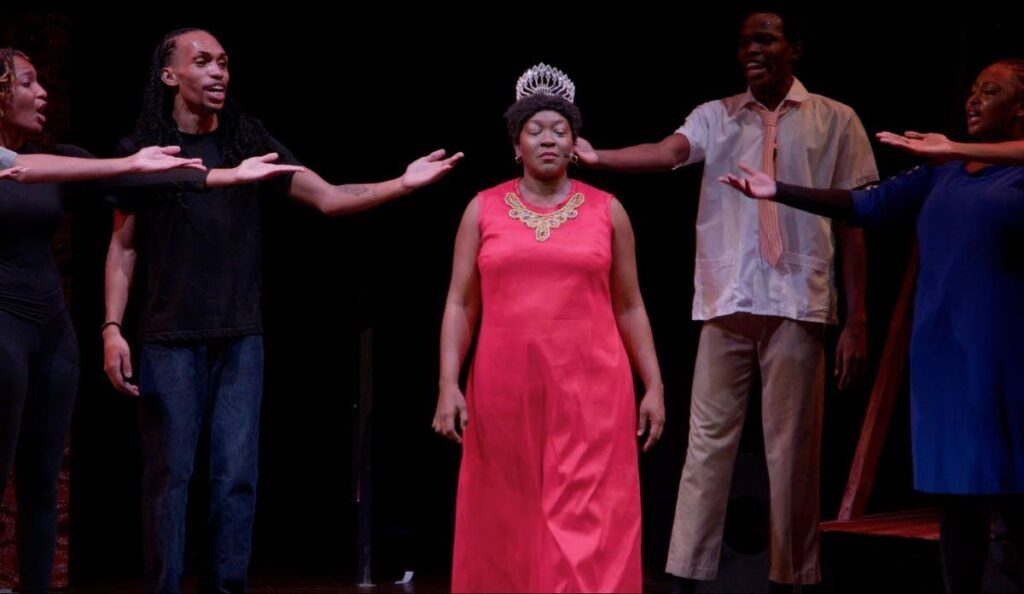
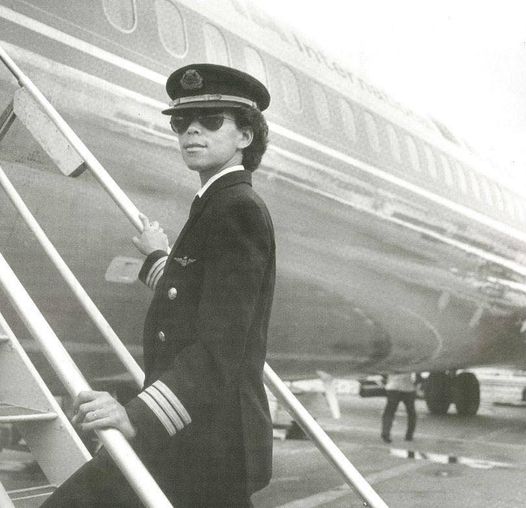


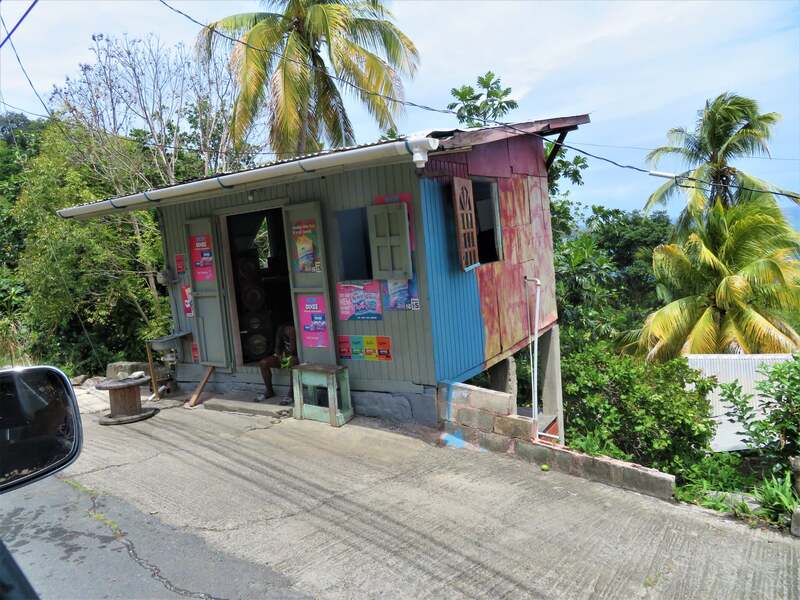

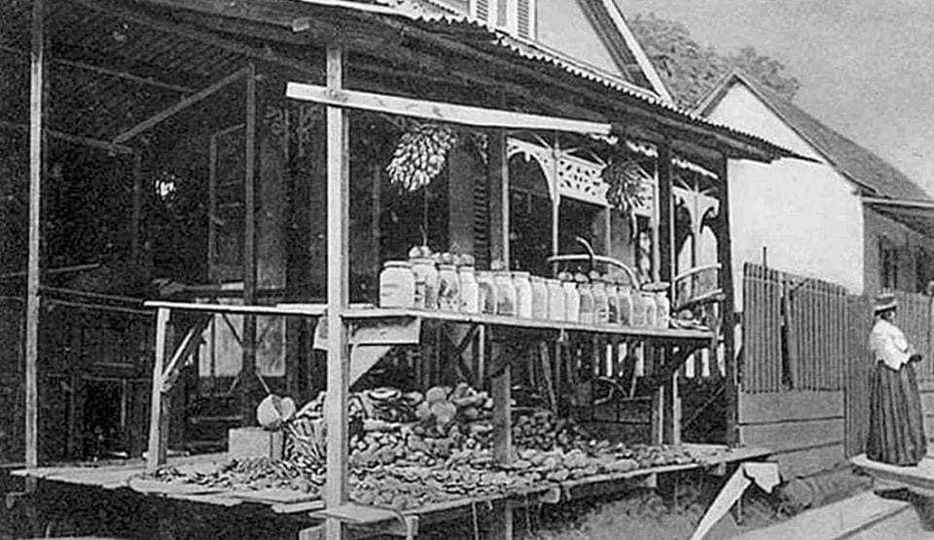
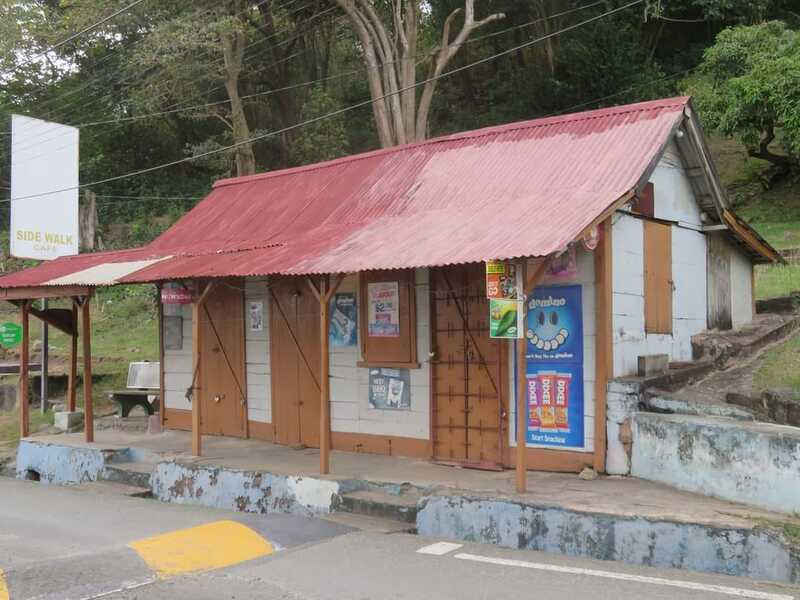

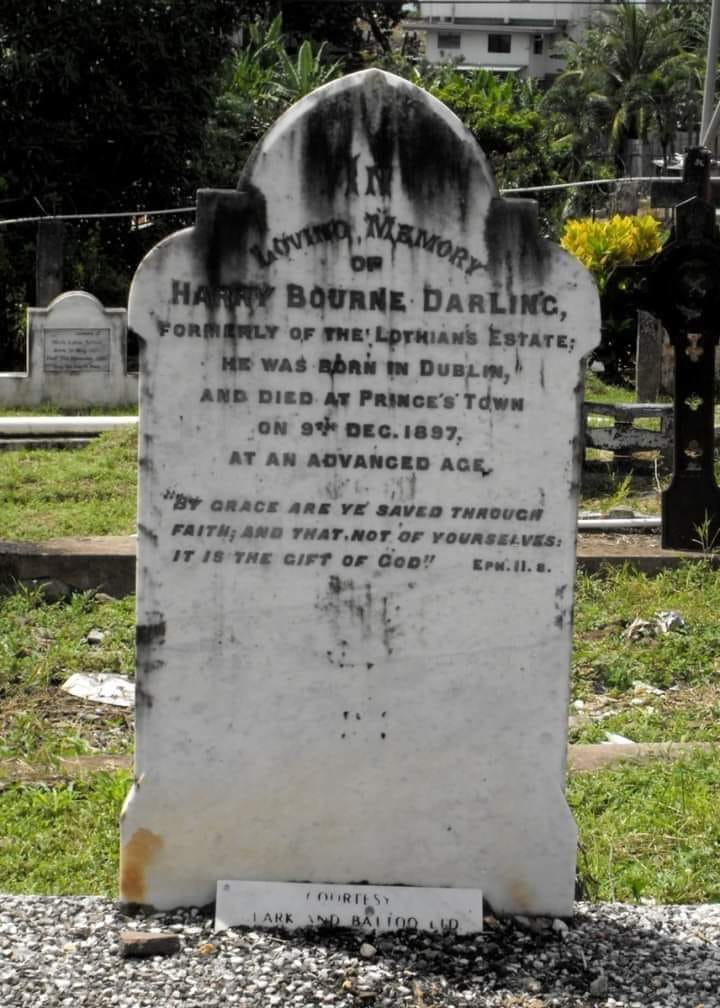
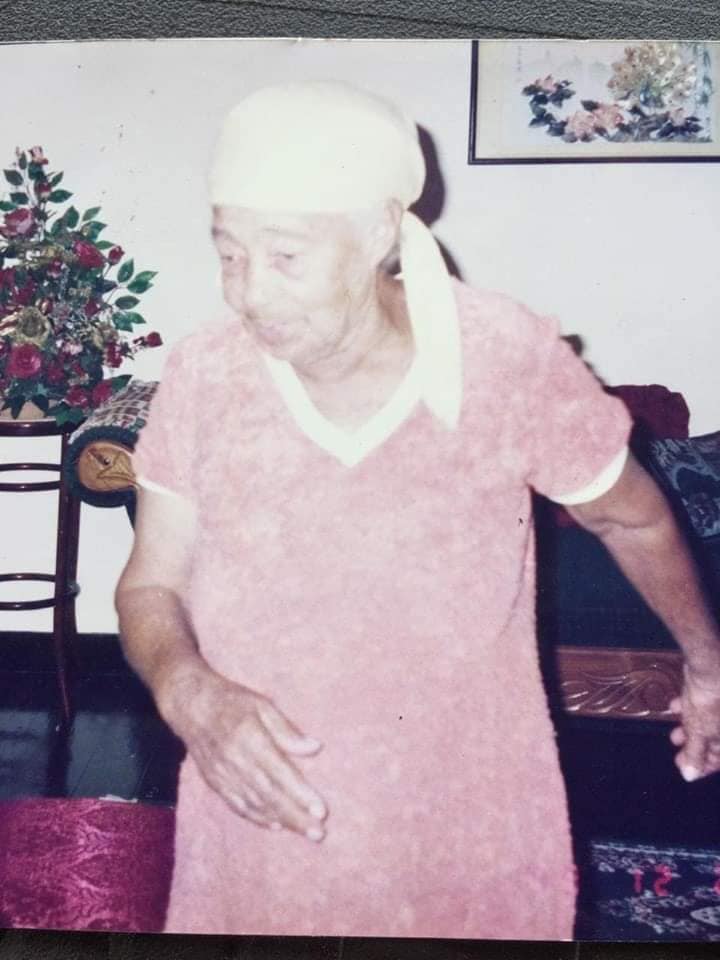
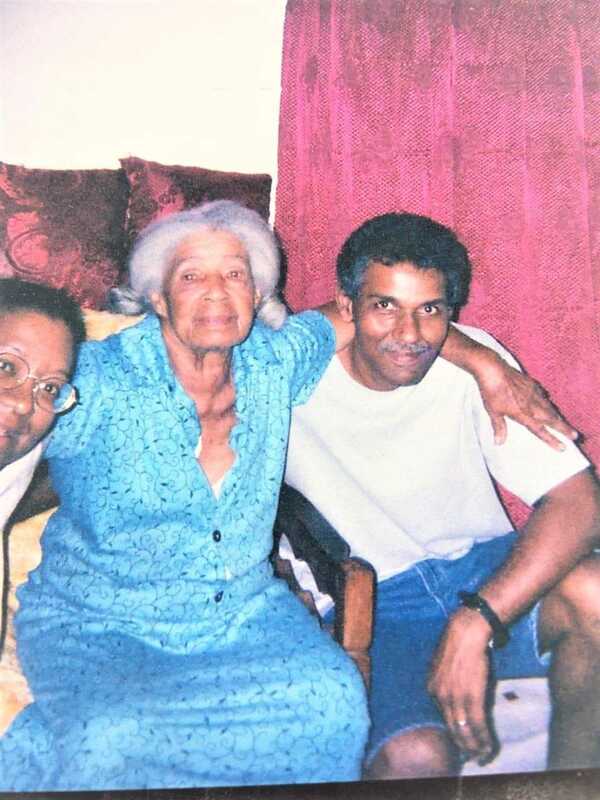
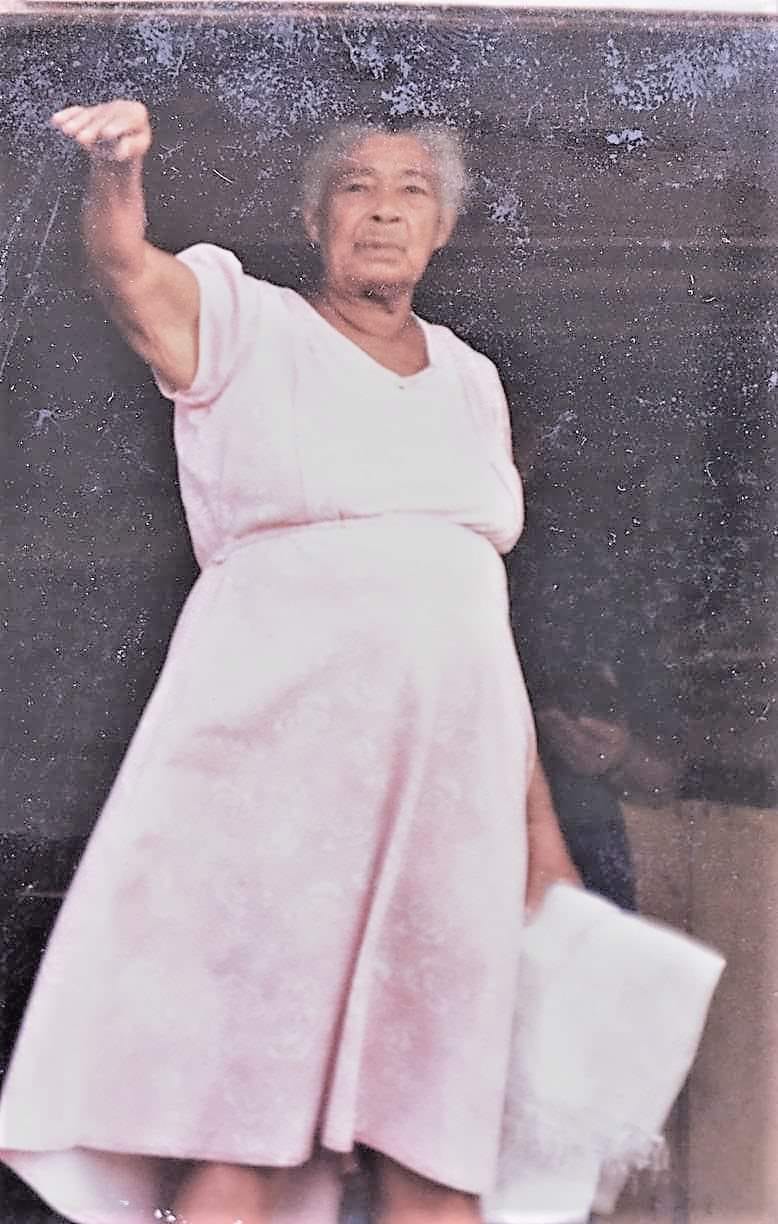
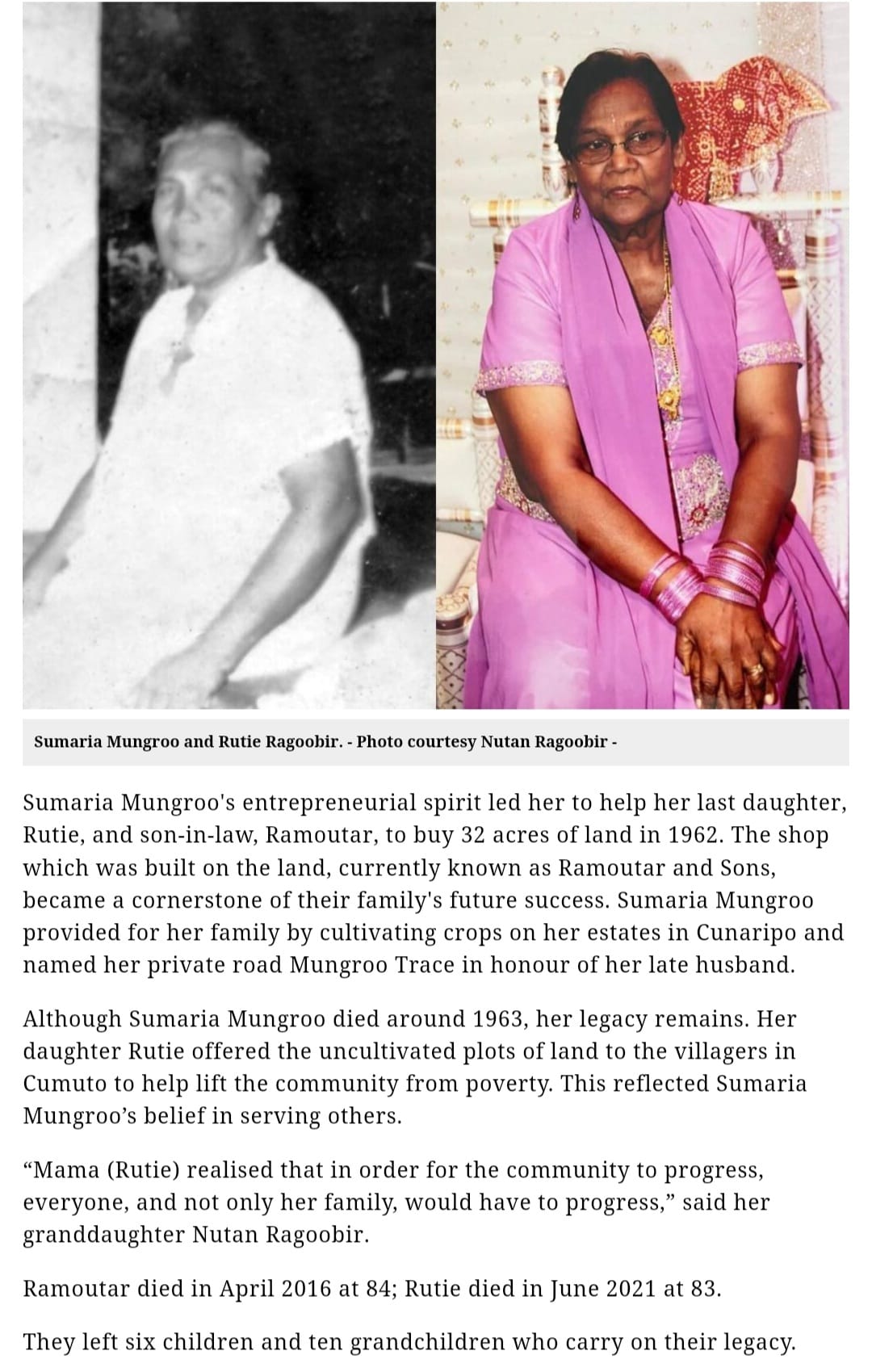
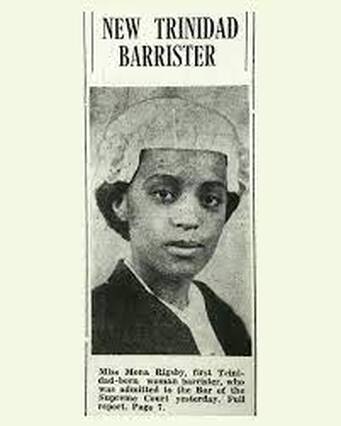

 RSS Feed
RSS Feed